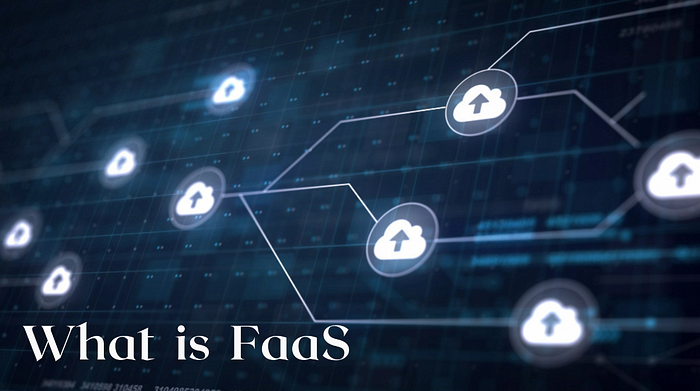What is FaaS? Advantages and Comparison of FaaS Providers

Function as a Service, also known as FaaS, is a cloud computing model that enables developers to create and run individual functions, or small pieces of code, without the need to manage the underlying infrastructure. This allows developers to focus on writing and deploying code, rather than worrying about the underlying servers and network configurations.
FaaS works by providing a platform for developers to write, test, and deploy their code as individual functions. These functions are typically triggered by specific events, such as a user uploading a file or requesting data from an API. Once the function is triggered, the FaaS platform takes care of running the code and managing the underlying infrastructure.
FaaS is built on top of containerization and orchestration technologies, such as Docker and Kubernetes. This allows the platform to scale and manage the functions as needed, based on the number of requests and available resources.
One of the main benefits of FaaS is its scalability. Because functions are only running when they are triggered, the platform can automatically scale up or down based on the number of requests. This means that developers don’t need to worry about provisioning or managing servers, as the FaaS platform will handle this automatically.
Another benefit of FaaS is its cost-effectiveness. Because functions are only running when they are needed, developers only pay for the resources that are actually being used. This can result in significant cost savings, especially for applications with variable usage patterns or spikes in traffic.
FaaS also allows for greater flexibility and faster development times. Because developers can focus on writing and deploying code, rather than managing infrastructure, they can iterate and test new features more quickly. This can lead to faster time to market and the ability to respond more quickly to changing business needs.
Additionally, FaaS allows for better collaboration and code reuse. Because functions are small, modular pieces of code, they can be easily shared and reused across different projects and teams. This can lead to faster development times and the ability to build more complex applications with fewer resources.
In summary, FaaS is a cloud computing model that allows developers to create and run individual functions without the need to manage the underlying infrastructure. It provides scalability, cost-effectiveness, flexibility, and faster development times. With the benefits of FaaS, it has become a popular choice for developing and deploying microservices-based applications.
There are several examples of FaaS providers in the market today, including:
- AWS Lambda
- Azure Functions
- Google Cloud Functions
When it comes to FaaS providers, AWS Lambda, Azure Functions, and Google Cloud Functions are three of the most popular options. Each of these platforms offers a range of features and capabilities that make them suitable for different use cases.
AWS Lambda, for example, is a fully managed service that allows users to run their code without having to provision or manage servers. It supports a wide range of programming languages, including JavaScript, Python, and C#, and provides automatic scaling and monitoring for your functions. One of the key benefits of using AWS Lambda is its integration with other AWS services, such as S3 and DynamoDB, making it easy to build serverless applications. However, one of the cons of using AWS Lambda is its relatively high cost compared to other FaaS providers.
Azure Functions, on the other hand, is a highly scalable and flexible service that allows users to create event-driven, serverless applications. It supports a wide range of languages, including JavaScript, C#, and Python, and provides built-in monitoring and logging capabilities. One of the key benefits of using Azure Functions is its integration with Azure services, such as Cosmos DB and Event Grid, making it easy to build complex, event-driven architectures. However, one of the cons of using Azure Functions is that it may not be as mature as some of the other FaaS providers.
Google Cloud Functions, like AWS Lambda and Azure Functions, is a fully managed service that allows users to run their code without having to provision or manage servers. It supports a wide range of programming languages, including JavaScript, Python, and Go, and provides automatic scaling and monitoring for your functions. One of the key benefits of using Google Cloud Functions is its integration with other Google Cloud services, such as Firebase and Cloud Storage, making it easy to build serverless applications. However, one of the cons of using Google Cloud Functions is that it may not have as wide a range of features as some of the other FaaS providers.
In conclusion, AWS Lambda, Azure Functions, and Google Cloud Functions are all popular FaaS providers that offer a range of features and capabilities. Each platform has its own set of pros and cons, and the best option for your use case will depend on your specific requirements. If you need to build serverless applications that integrate with other AWS services, AWS Lambda may be the best choice. If you need to build event-driven, serverless applications that integrate with Azure services, Azure Functions may be the best choice. And if you need to build serverless applications that integrate with other Google Cloud services, Google Cloud Functions may be the best choice.
